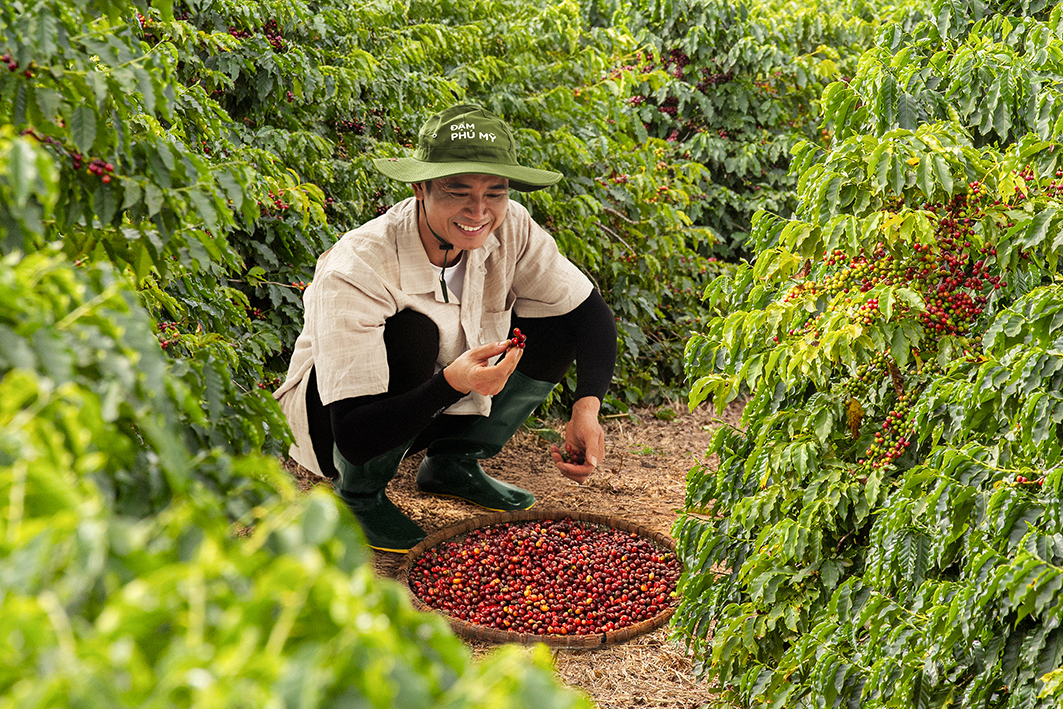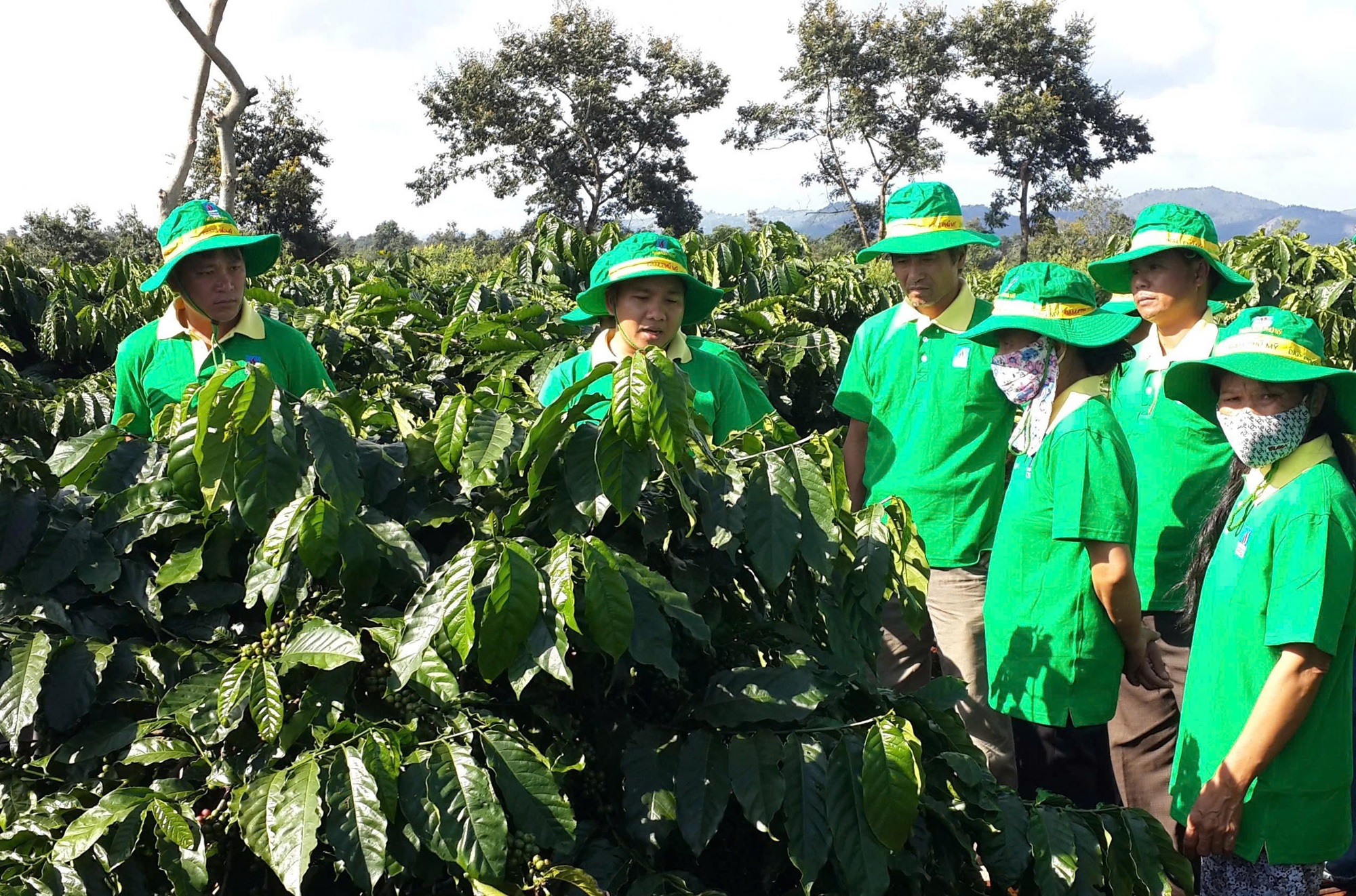The Central Highlands is entering its peak rainy season, a crucial time for fertilizing coffee plants to promote fruit development. Agricultural experts emphasize that this period significantly impacts the yield and quality of coffee beans post-harvest, necessitating meticulous care, especially a suitable nutrient regimen.
Fertilizing during the rainy season isn't just about providing nutrients. Without understanding the plant's needs at each growth stage, incorrect application can lead to young fruit drop, nutrient runoff, inadequate or imbalanced nutrient absorption, reduced yield, and increased pest and disease susceptibility. "Choosing the wrong fertilizer or using the wrong dosage can ruin the entire harvest," shared Nguyen Van Thanh, a coffee farmer in Cu M'gar District (Dak Lak).
Three key fertilization periods during the rainy season
According to the Western Highlands Agro-Forestry Science and Technology Institute (WASI), there are three main fertilization periods during the rainy season: early, mid, and late season. Each corresponds to a specific growth stage of the coffee plant, requiring different fertilizers and nutrient ratios.
Early rainy season (May-June): The plants focus on branch and leaf development, as well as nurturing young fruit. This stage requires nitrogen and phosphorus to help plants recover from the dry season and boost growth.
Mid-rainy season (July): Fruit rapidly expands and accumulates dry matter. Potassium is crucial for transporting nutrients to the fruit, ensuring optimal bean size. Sufficient nutrients also minimize fruit drop during heavy rainfall.
Late rainy season (August-September): The focus shifts to bean development, increasing density and weight. Plants need ample nutrients, particularly potassium, for uniform ripening, facilitating a smooth harvest.
The total fertilizer amount per application is approximately 500-700 kg per hectare, depending on soil type, farming practices, and expected yield. For higher anticipated yields, increase the amount by 10-15% for each additional ton of coffee beans.
 |
A thriving coffee plantation thanks to proper fertilization. Photo: Phu My |
A thriving coffee plantation thanks to proper fertilization. Photo: Phu My
Choosing quality fertilizers for each stage
Besides nutrient ratios, fertilizer quality and solubility significantly affect plant absorption in wet conditions. Phu My Fertilizers, products of PetroVietnam Fertilizer and Chemicals Corporation (PVFCCo), are popular among Central Highlands farmers due to their rapid solubility and suitability for various growth stages. Their chemical technology ensures nutrients are tightly bound and evenly distributed within each granule, minimizing nutrient loss from runoff.
Specifically, Phu My NPK 15-15-15+TE is a common choice for the early rainy season. Its balanced nitrogen-phosphorus-potassium formula promotes overall plant development, strong roots, and robust branches and leaves, enhancing resistance to pests, diseases, and harsh weather.
During the mid and late rainy seasons, Phu My NPK 16-8-16+TE excels with its high potassium content, meeting the needs of fruit development and sugar transport to the beans, resulting in denser beans and reduced fruit drop. Trace elements (TE) like boron, zinc, and magnesium are vital components of chlorophyll, promoting photosynthesis in low-light rainy season conditions and enhancing plant resilience. Phu My also encourages farmers to combine these with single-nutrient fertilizers like Phu My Urea and Phu My Potassium for customized application based on soil conditions and specific needs.
If separate nitrogen and potassium supplements are needed, Phu My Urea (46.3% N) can be mixed with Phu My Potassium (61% K2O), but applied immediately after mixing to prevent evaporation or moisture absorption, according to a Phu My agricultural expert.
When fertilizing coffee plants, consider soil moisture, weather, and application methods to prevent nutrient loss. Fertilize only when the soil is sufficiently moist, avoiding dry soil or application immediately before heavy rain. Spread the fertilizer evenly around the canopy in a ring shape (20-30 cm from the trunk) or along furrows at the canopy edge. For farms with water-saving irrigation systems, dissolve the fertilizer in water for combined fertilization and irrigation, facilitating rapid absorption. Divide fertilizer applications throughout the year, avoiding concentrated single applications. Supplement with micronutrients like magnesium, boron, and zinc to enhance disease resistance and fruit quality.
Optimizing results with soil analysis and organic microorganisms
In addition to inorganic fertilizers, experts recommend using bio-fertilizers and Phu My organic fertilizers to improve soil health and boost beneficial microorganisms. These help retain moisture during the rainy season, improve soil structure, and reduce nutrient runoff.
"For effective fertilization, periodic soil testing is recommended. Knowing the soil's deficiencies or excesses ensures accurate and appropriate application," shared engineer Nguyen Thanh Hai, an agricultural extension officer in Dak Ha District (Kon Tum).
 |
PVFCCo-Phu My technical staff guide farmers on proper fertilizer use. Photo: Phu My |
PVFCCo-Phu My technical staff guide farmers on proper fertilizer use. Photo: Phu My
Phu My Fertilizer brand introduces a smart soil nutrient measurement program combined with personalized fertilizer guidance. This solution helps farmers follow the "Fer-Right" principle, optimizing farming efficiency, protecting the environment, and enhancing agricultural product quality. Using mobile testing devices and smart software, Phu My fertilizer consultants can analyze soil directly in farmers' fields and provide tailored recommendations. The system integrates data on plant growth stages and regional soil characteristics for accuracy.
"Well-nourished coffee plants with dense, uniform beans and high sugar content are the foundation for high-quality green coffee beans that, when roasted, offer enhanced aroma, deep sweetness, and reduced bitterness. High-quality coffee fetches higher prices from domestic roasters and export companies. This is the double benefit of proper fertilization techniques," added Mr. Thanh.
Phu My Fertilizer has established a responsible supply chain from clean production to distribution. Partnering with coffee growers, Phu My offers a comprehensive solution encompassing quality products and smart soil analysis services. Through the FerRight program - using fertilizers correctly - the company provides a range of inorganic, organic, and bio-fertilizers with clear origins, combating counterfeit fertilizers, enhancing farming efficiency, and protecting farmers.
The Dan












